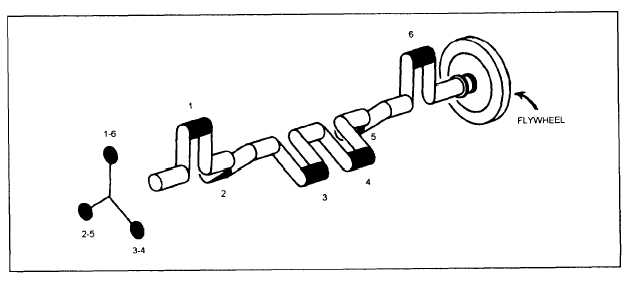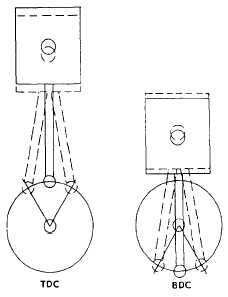Figure 12-6.-Crankshaft for a six-cylinder engine.
MULTIPLE-CYLINDER ENGINES
The discussion so far in this chapter has concerned
a single-cylinder engine. A single cylinder provides only
one power impulse every two crankshaft revolutions in
a four-cycle engine. It delivers power only one-fourth
of the time. To provide for a more continuous flow of
power, modem engines use four, six, eight, or more
cylinders. The same series of cycles take place in each
cylinder.
In a four-stroke cycle, six-cylinder engine, for
example, the cranks on the crankshaft are set 120
degrees apart. The cranks for cylinders 1 and 6, 2 and 5,
and 3 and 4 are in line with each other (fig. 12-6). The
cylinders fire or deliver the power strokes in the
following order: 1-5-3-6-2-4. Thus, the power strokes
follow each other so closely that a continuous and even
delivery of power goes to the crankshaft.
TIMING
In a gasoline engine, the valves must open and close
at the proper times with regard to piston position and
stroke. In addition, the ignition system must produce the
sparks at the proper time so that the power strokes can
start. Both valve and ignition system action must be
properly timed if good engine performance is to be
obtained.
Valve timing refers to the exact times in the engine
cycle that the valves trap the mixture and then allow the
burned gases to escape. The valves must open and close
so that they are constantly in step with the piston
movement of the cylinder they control. The position of
the valves is determined by the camshaft; the position
of the piston is determined by the crankshaft. Correct
valve timing is obtained by providing the proper
relationship between the camshaft and the crankshaft.
When the piston is at top dead center, the crankshaft
can move 15° to 20° without causing the piston to move
up and down any noticeable distance. This is one of the
two rock positions (fig. 12-7) of the piston. When the
piston moves up on the exhaust stroke, considerable
momentum is given to the exhaust gases as they pass out
through the exhaust valve port. If the exhaust valve
closes at top dead center, a small amount of the gases
Figure 12-7.-Rock position.
12-7



